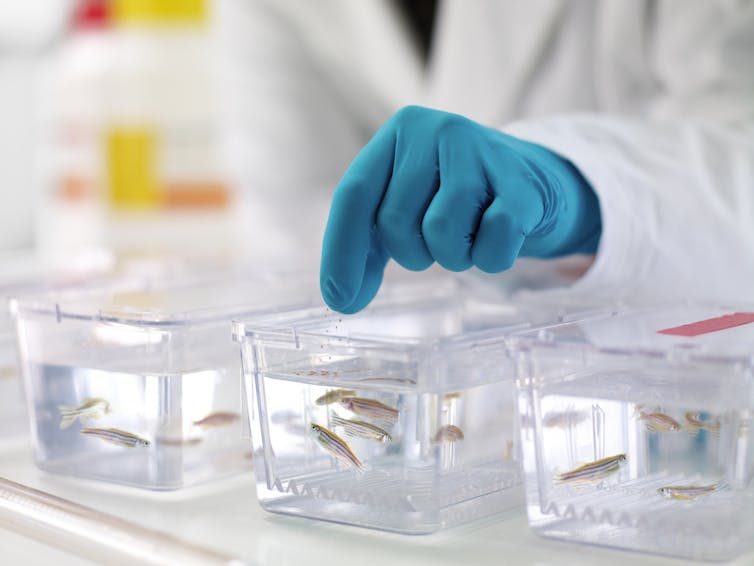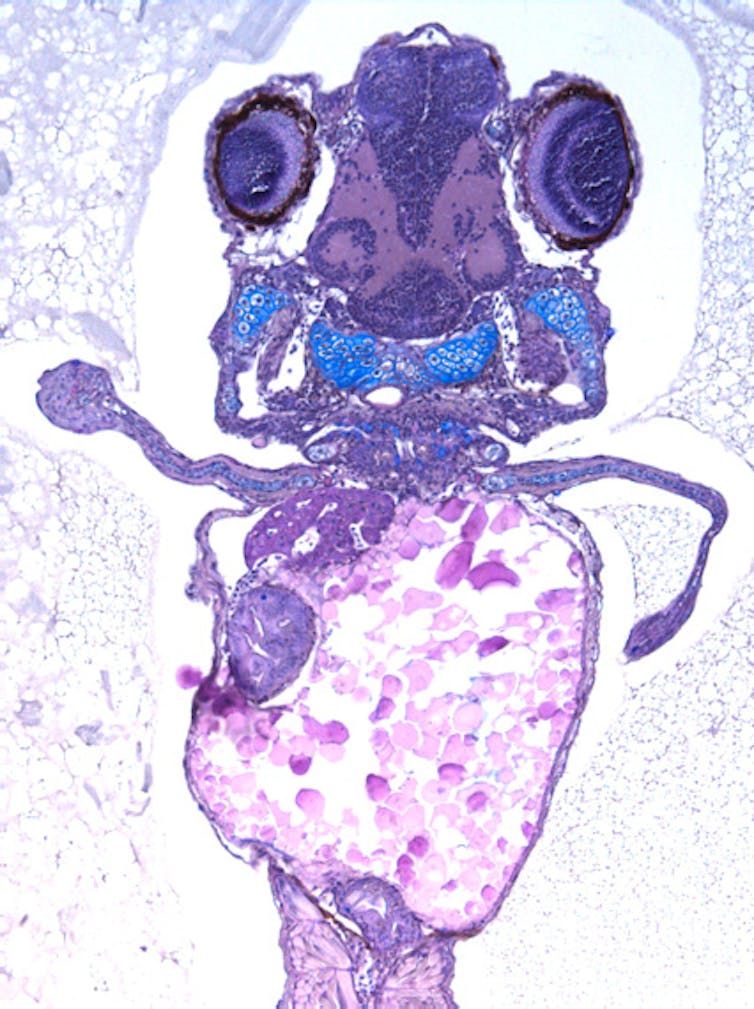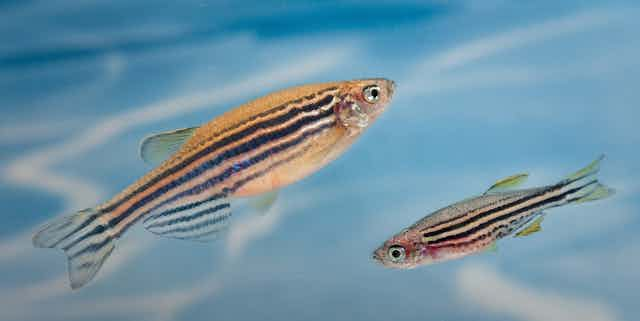In the late Devonian period, roughly 365 million years ago, fish-like creatures started venturing from shallow waters onto land.
Among the various adaptations associated with the switch to land life was the conversion of fins into limbs. This transition allowed animals to both navigate aquatic habitats and walk on land.
We already know that fins and limbs share the same genetic program for their induction and early development. But due to their divergent morphological traits (form and structure), it was unknown how a fin could evolve into a limb.
But now, a paper published in the journal Developmental Cell by Renata Freitas and colleagues from the University of Andalusia (Seville, Spain), suggests the key to fin-to-limb transition lies in the regulation of the homeotic (responsible for the formation of body parts) gene hoxd13.
Fingers, toes, fins and more
Fossil and anatomical data show that the main innovation of land vertebrate (tetrapod) appendages is the autopod: the distal – or furthest from the body – part of the limb where digits develop.
Fish obviously lack fingers and toes but they also lack the expression signature – the repertoire of expressed genes necessary to identify a cellular structure – of an autopod.
Therefore, finding a genetically altered fish with the characteristics of autopod development will explain how the fin-to-limb transition occurred.
So-called 5’Hoxd genes – genes which can lead to limb and other body-part transformation when mis-expressed – seemed to be ideal candidates to investigate. Especially since it has been reported that these genes are involved in autopod development.
In particular, hoxd13 has been identified as a key player in autopod development. Why? Because mutations of hoxd13 in humans are known to result in syndactyly (the fusion of multiple digits, such as fingers) and polydactyly (the formation of extra digits).
Therefore, Freitas and collaborators speculated, the modification of hoxd13a expression in fish might lead to a limb type of fin.

Testing the waters
To confirm their hypothesis, the authors induced hoxd13a expression during late fin formation in zebrafish. They found that this single gene mis-expression was sufficient to distally expand the endoskeleton territory. In other words, the outer region of the fin started to show signs of becoming a limb.
This was confirmed by cartilage staining and cartilage specific gene expression (sox9 and col2a1a) in the fin fold (the distal-most part of the fin) where cartilage is normally not observed.
This initial result was promising, as conversion of the fin fold into cartilage would be the first step leading to the formation of an autopod. But can hoxd13a over-expression induce fin tissue with an autopodial signature?
The researchers found that hoxd13a over-expression induces the expression domain of genes of distal limb markers (such as hoxd13b, cyp26b1 or pea3) into the domain of the truncated fin fold, where they are normally excluded. In other words over-expression of hoxd13a in the fin led to a specific gene signature in the distal part of the fin that is specific to a land vertebrate autopod.
Moreover, the researchers found that a fin-fold-specific gene, such as fgf8a, had its expression dramatically down-regulated, meaning that the fin fold itself was dramatically reduced.
Primitive limb
Overall, the cartilage expansion and altered distal limb gene-specific expression observed in hoxd13a over-expression are consistent with the conversion of the distal most part of the fin (the fin fold) into a distal limb-like structure.

Increased cell proliferation is another feature of distal limb development. Consistent with the previous observation, over-expression of hoxd13a in the fin led to an increase in cell proliferation in the most distal part of the fin. This most distal part is not considered a fin fold anymore, but now an autopod-like structure.
These data mean that modulation of the expression of a single gene – in our case hoxd13a – in the fin lead to a reduction of the fin fold (not present in the limb), development of distal cartilage (essential for digits formation) and specific genes expression that are found in the autopod in tetrapods but not in fish fins.
The final step in this study was to confirm that hoxd13 expression is a key feature of autopod formation. That is, the authors needed evidence that hoxd13 is regulated differently between fish and tetrapods.
Hoxd13 is differentially regulated in the zebrafish fin and in the mouse limb. But using the mouse hoxd13 regulatory sequence fused to a reported gene – the green fluorescent protein (GFP) – they authors demonstrated that the mammalian regulatory sequence for hoxd13 is recognised by the zebrafish.
The authors observed strong GFP expression in the fin mesenchyme (a type of connective tissue). As the fin matured, the GFP expression was expanded distally.
The paper published by Freitas supports the hypothesis that the modulation of hox genes – such as hoxd13d – expression during late fin development allows for the evolution of fins into the cellular material required for digit formation.
In this way, the paper has much to teach us us about the evolutionary processes that led to a transition from sea- to land-based organisms and the formation of limb formation in land vertebrates.

